April 2025
Why Does My Heel Hurt First Thing in the Morning?
Why You Still Have Lower Back Pain Even After Injections or Surgery?

A Personal Note from Dr.Scott:
Dear Readers,
As April arrives, I’m reminded of the joy and lightheartedness that this month brings, especially with April Fool’s Day marking its onset. Reflecting on this, I recall a memorable prank from my childhood.
One April 1st, my mother enthusiastically announced that she had won the lottery and was contemplating how to distribute the winnings. Being in middle school at the time, I was thrilled and began daydreaming about the possibilities. Of course, it was all in good fun, and we shared a hearty laugh once I realized I’d been playfully duped.
This fond memory underscores the importance of laughter and not taking life too seriously. As Ferris Bueller wisely said, “Life moves pretty fast. If you don’t stop and look around once in a while, you could miss it.”
In our daily hustle, stress often becomes a constant companion, activating our sympathetic nervous system—the body’s “fight or flight” response. Chronic activation of this system can lead to pain, anxiety, and even chronic diseases. However, laughter serves as a natural antidote. It not only alleviates stress but also offers numerous health benefits, including improved mood and enhanced immunity.
This April, let’s embrace the spirit of the season by finding moments to laugh, relax, and cherish the world around us. Remember, amidst our responsibilities and challenges, taking a moment to pause and find joy can significantly impact our overall well-being.
Wishing you all a month filled with laughter and good health.
Warm regards,
Dr. Scott
Featured Article of the Month
Why Does My Heel Hurt So Bad in the Morning? The Truth About Plantar Fasciitis
If you’ve ever woken up and felt a stabbing pain in your heel the moment you took your first steps, you’re not alone. This common complaint is often a telltale sign of plantar fasciitis—one of the leading causes of foot pain. But why does it happen? And more importantly, how do you fix it?
Let’s break down the real reason behind plantar fasciitis, why mornings feel the worst, and what you can do to relieve the pain without relying on medication or surgery.
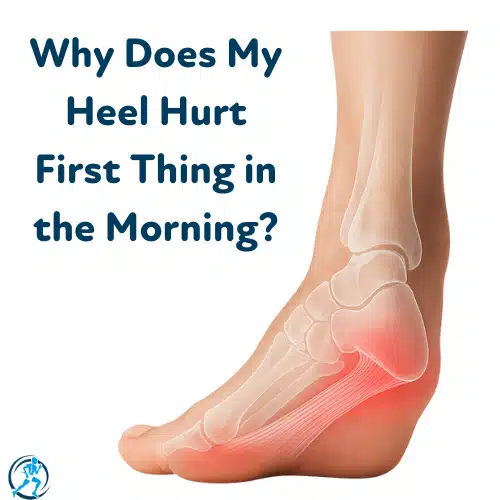
What Is Plantar Fasciitis?
Plantar fasciitis occurs when the plantar fascia—a thick band of tissue running along the bottom of your foot—becomes inflamed or irritated. This tissue acts like a shock absorber, supporting your arch with every step. But when too much strain is placed on it, microtears develop, leading to pain and stiffness—especially in the heel.
Why Is It Worse in the Morning?
If you have plantar fasciitis, mornings can be brutal. The reason? Tightness from inactivity.
- While you sleep, your foot is at rest, and the plantar fascia contracts and tightens.
- When you take your first steps, the suddenly stretched fascia becomes irritated, triggering sharp pain.
- After some movement, the tissue loosens up, and the pain may temporarily improve—but it often returns after long periods of sitting or standing.
Common Causes of Plantar Fasciitis
Plantar fasciitis isn’t just random—it’s often triggered by repetitive stress or improper foot mechanics. Some of the biggest causes include:
- Tight calves and Achilles tendons – Limited ankle mobility puts extra strain on the plantar fascia.
- Weak foot or arch muscles – Lack of foot strength leads to overuse of the fascia.
- Overuse or high-impact activities – Runners, walkers, and those who stand all day are at higher risk.
- Worn-out or unsupportive shoes – Old sneakers or flat shoes offer no support, increasing stress on the fascia.
- Sudden increase in activity – A big jump in running mileage or time on your feet can trigger pain.
How Do You Fix It?
The good news? Plantar fasciitis is treatable. Here’s how you can reduce pain and speed up recovery:
- Stretch Your Calves & Feet – Gentle stretching of the Achilles tendon, calf muscles, and foot arch can reduce strain.
- Strengthen Your Foot Muscles – Simple exercises like toe curls and arch lifts help support the fascia.
- Use a Frozen Water Bottle – Rolling your foot over a frozen bottle reduces inflammation while stretching the fascia.
- Check Your Shoes – Swap out worn-out sneakers and look for supportive shoes with good arch support.
- Improve Your Movement Patterns – Poor biomechanics and tightness elsewhere in your body can contribute to foot pain.
When to Seek Help
If your heel pain isn’t improving or it keeps coming back, it’s time to address the root cause. Plantar fasciitis can turn into a chronic condition if left untreated, making every step painful and frustrating.
We specialize in fixing foot pain at its source—helping you regain mobility, strength, and confidence in your movement without medications or injections.
Struggling with heel pain? Book a free consultation today and let’s get you walking pain-free again!
Fitness Corner
7 Biggest Fitness Myths That Might Be Holding You Back
April Fool’s Day is all about tricks and pranks—but don’t let bad fitness advice fool you! There are a lot of myths out there that could be slowing your progress, increasing your pain, or even putting you at risk for injury.
Let’s debunk seven of the biggest fitness myths so you can train smarter, feel better, and stay pain-free!
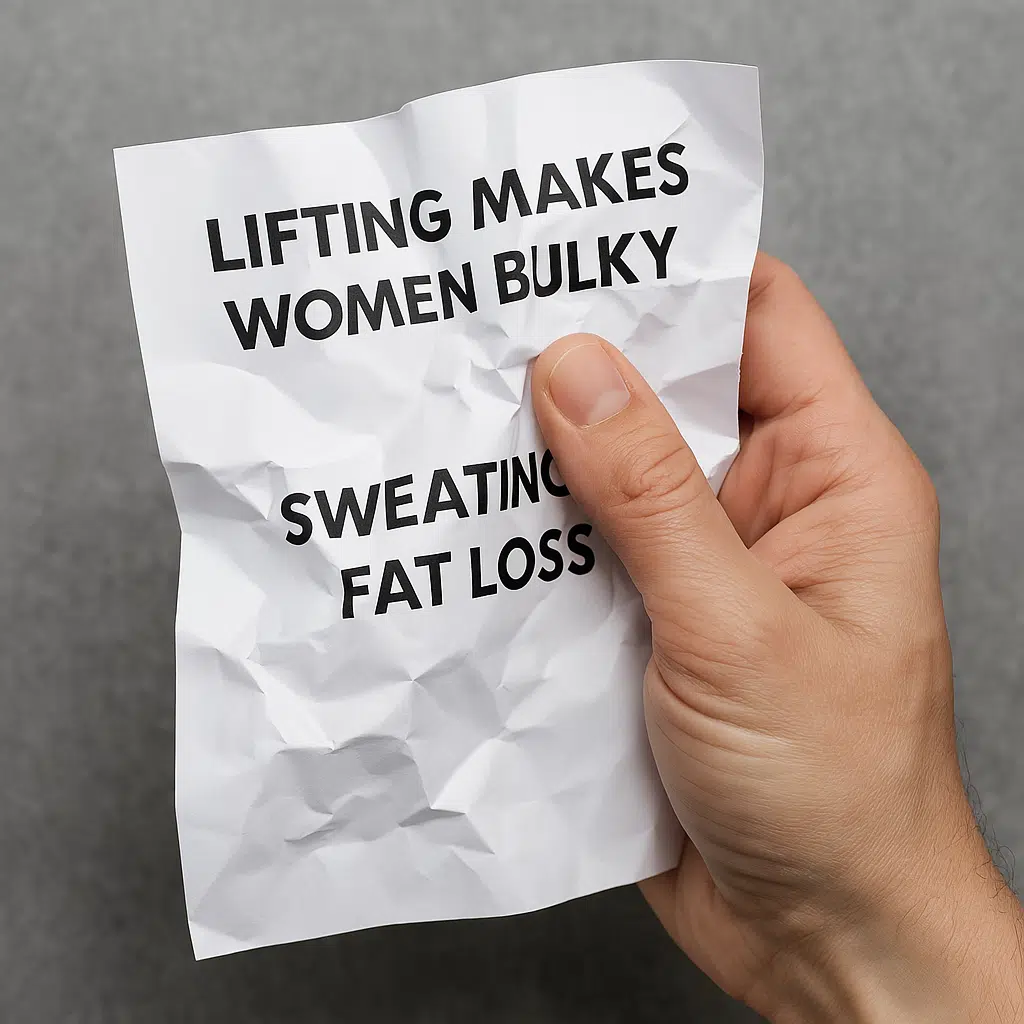
❌ MYTH #1: “If It Hurts, You Should Push Through It”
✅ Truth: Pain is a warning sign, not a test of toughness. There’s a difference between soreness and actual pain. Ignoring sharp, persistent pain—especially in your knees, lower back, or feet—can lead to long-term damage.
💡 Don’t get fooled! If something hurts, adjust your movement, focus on mobility, and get a professional assessment if needed.
❌ MYTH #2: “The More You Sweat, The More Fat You Burn”
✅ Truth: Sweat isn’t a sign of how many calories you’ve burned—it’s your body’s way of cooling down. Some people sweat more than others, and external factors (like temperature) play a big role.
💡 Don’t get fooled! Focus on strength, movement, and consistency—not just sweating buckets.
❌ MYTH #3: “Lifting Weights Makes You Bulky”
✅ Truth: This is one of the biggest fitness myths—especially for women! Strength training builds lean muscle, improves metabolism, and prevents age-related muscle loss. Getting “bulky” requires extreme training and nutrition changes that don’t happen by accident.
💡 Don’t get fooled! Strength training will make you stronger, leaner, and healthier—not turn you into a bodybuilder overnight.
❌ MYTH #4: “You Should Stretch Before Every Workout”
✅ Truth: Static stretching before exercise can actually reduce strength and stability. Instead, a dynamic warm-up (like leg swings, arm circles, or bodyweight squats) prepares your muscles and joints for movement more effectively.
💡 Don’t get fooled! Save static stretching for after workouts—warm up with movement instead!
❌ MYTH #5: “Crunches Are the Best Way to Get Abs”
✅ Truth: You can do all the crunches in the world, but if your nutrition and overall fitness aren’t on point, your abs won’t show. More importantly, crunches don’t strengthen your core effectively.
💡 Don’t get fooled! Abs are built through proper training and diet—not endless crunches.
❌ MYTH #6: “Running is the Best Way to Lose Weight”
✅ Truth: Running can be great for cardiovascular health, but it’s not the most effective way to lose weight. Strength training burns more calories long-term by increasing muscle mass and metabolism.
💡 Don’t get fooled! A combination of strength training and movement-based cardio is the best approach for long-term fat loss and fitness.
❌ MYTH #7: “Getting Older Means You Should Take It Easy”
✅ Truth: Staying active is more important than ever as you age. Avoiding exercise accelerates muscle loss, joint stiffness, and loss of mobility.
💡 Don’t get fooled! Your body was made to move—train smarter, not slower!
➡ Need help figuring out the best way to train without pain? Book a free consultation with us today!
Staff Spotlight – Meet Ashley Gray

Ashley Gray
(Personal Trainer / Vice President)
FAVORITES:
Place: The Beach
Food: Mexican
Vacation Spot: St. Augustine
TV show: Friends
Film: Greese
Guilty Pleasure Song: “Love Story”; by Taylor Swift
Celebrity: Reese Witherspoon
Book: Crazy Rich Asians
Sport: Football
Team: Chicago Bears
Hobbies: Working out, cooking, traveling, spending time with family
Oliver’s Healthy Recipe

Lemon Garlic Spring Fish with Asparagus & Herbed Quinoa
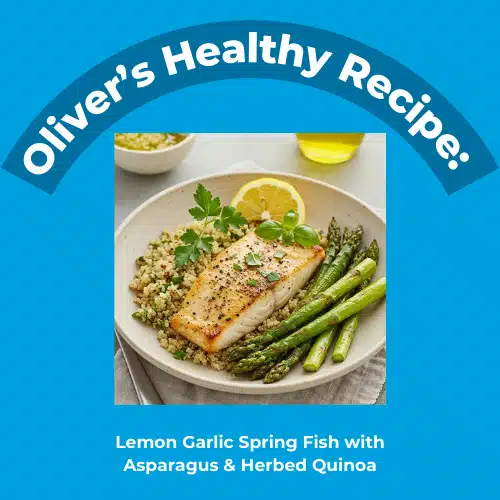
These no-bake cranberry almond energy bites are a perfect guilt-free treat for the holidays. They’re packed with wholesome ingredients, providing a great balance of protein, fiber, and healthy fats to keep your energy up during the busy season. Plus, they’re festive, delicious, and easy to make!
Ingredients (Makes about 12 bites):
- 1 cup rolled oats (gluten-free if needed)
- 1/2 cup unsweetened dried cranberries
- 1/2 cup almond butter (or your favorite nut butter)
- 1/3 cup raw honey or maple syrup
- 1/4 cup ground flaxseeds
- 1/4 cup chopped almonds
- 1 teaspoon vanilla extract
- 1/2 teaspoon cinnamon
- Optional: Pinch of sea salt or shredded coconut for rolling
Ingredients
Instructions:
- Combine Ingredients:
In a large mixing bowl, combine the rolled oats, dried cranberries, almond butter, honey (or maple syrup), ground flaxseeds, chopped almonds, vanilla extract, cinnamon, and a pinch of sea salt if using. - Mix Thoroughly:
Stir the mixture until everything is evenly combined. If the mixture feels too dry, add a teaspoon of water or more honey. If it’s too sticky, add a bit more oats or flaxseeds. - Form the Bites:
Use your hands or a small cookie scoop to roll the mixture into 1-inch balls. If desired, roll the bites in shredded coconut for an extra festive touch. - Chill:
Place the energy bites on a parchment-lined tray and refrigerate for at least 20 minutes to firm up. - Store and Enjoy:
Store the bites in an airtight container in the fridge for up to 1 week or freeze for up to 1 month. They’re perfect as a quick snack, dessert, or even a healthy addition to your holiday table!
The Quiz
April Quiz: Is Your Body Playing Tricks on You? Find Out What You Need to Fix!
10-Question Quiz:
(Take this quick quiz to uncover what’s secretly holding you back from feeling and moving your best!)
10-Question Quiz: “Is Your Body Playing Tricks on You?”
(Take this quick quiz to uncover what’s secretly holding you back from feeling and moving your best!)

1. How do you feel when you wake up in the morning?
A) Refreshed and ready to go
B) Stiff and achy, but it gets better after moving
C) Exhausted and sore, like I didn’t sleep at all
2. Can you comfortably get up from a chair or the floor without using your hands?
A) Yes, no problem
B) I can, but it’s getting harder
C) No, I need assistance
3. How often do you experience nagging pain or discomfort?
A) Rarely or never
B) A few times a week, but I manage it
C) Almost daily, and it slows me down
4. How many hours of quality sleep do you typically get per night?
A) 7-9 hours, and I wake up feeling rested
B) 5-6 hours, but I feel okay most days
C) Less than 5 hours or I wake up multiple times feeling exhausted
5. How do you typically react to stress?
A) I handle it well and have coping strategies
B) It affects me occasionally, but I push through
C) It feels overwhelming and drains my energy
6. How would you describe your daily movement habits?
A) I stay active—walking, stretching, and exercising regularly
B) I try to move, but I sit more than I should
C) I’m mostly sedentary and feel stiff or sluggish often
7. Can you touch your toes comfortably without straining?
A) Yes, no problem
B) Barely, and I feel tight when I try
C) Not at all—it feels impossible
8. How often do you focus on strength training or functional movement?
A) At least 2-3 times per week
B) Once in a while, but not consistently
C) Never or rarely—I don’t know what to do

9. How do you fuel your body with nutrition?
A) I eat a balanced diet with whole, nutrient-dense foods
B) I try to eat healthy but slip into bad habits sometimes
C) I often rely on processed foods, caffeine, or fast meals
10. When you experience pain, how do you respond?
A) I address it with movement, recovery, or professional help
B) I ignore it and hope it goes away
C) I stop all activity and avoid movement altogether
How to Score Your Results:
✔ Mostly A’s: Your body is thriving!
➡ You’re in tune with your movement, sleep, stress, and recovery. Keep it up!
✔ Mostly B’s: Your body is giving you warning signs.
➡ You’re on the right track, but small tweaks could help you move, feel, and sleep better. Consider strengthening weak areas before they lead to bigger issues.
✔ Mostly C’s: Your body is struggling, and it’s time for a reset.
➡ Pain, poor movement, stress, or sleep deprivation could be holding you back. Let’s pinpoint the root cause and create a game plan to help you feel your best again!
💡 Want a deeper assessment? Schedule a free consultation to uncover what your body really needs!
➡ Want a deeper assessment? Schedule a free consultation to uncover what your body really needs!
Fitness Client Of The Month
Meet Rhonda Martin – Our Fitness Client of the Month!
Rhonda came to us feeling stuck. She was unsure if the workouts she was doing were actually helping or holding her back. Like many, she wanted to feel strong, capable, and confident—not just for everyday life, but to prepare for an upcoming summer trip that meant a lot to her.
She didn’t need another random routine—she needed structure, expert guidance, and a dose of accountability to make real progress. Since joining our program, Rhonda has become more efficient with her training, more confident in her body, and is now on track to crush her goals. Her story is proof that with the right support, you can break through the rut and rediscover what you’re capable of.
Way to go, Rhonda! 🔥
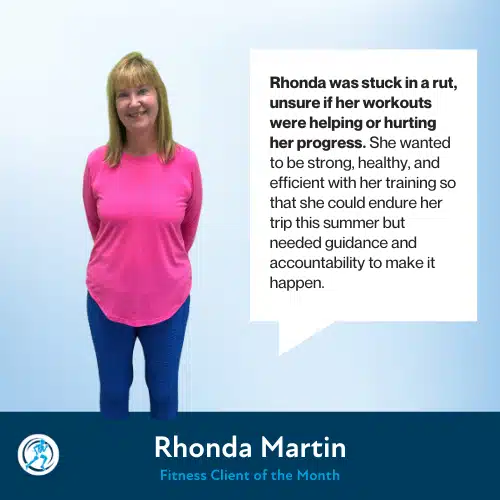
Patient Case Study
How Edgar Avila Overcame Chronic Tennis Elbow Pain with the Gray Method™
Edgar Avila, a 47-year-old dad, has always been an active man. A passionate fisherman and fitness enthusiast, he loved spending weekends casting lines with his kid and hitting the gym to stay strong. But four months ago, Edgar’s active lifestyle came to a screeching halt. He developed chronic tennis elbow, or lateral epicondylosis, after overdoing it in the gym with heavy lifting and repetitive forearm exercises.
The pain started as a dull ache but quickly escalated to a sharp, burning sensation on the outer side of his elbow, rating a 7 out of 10 on most days.
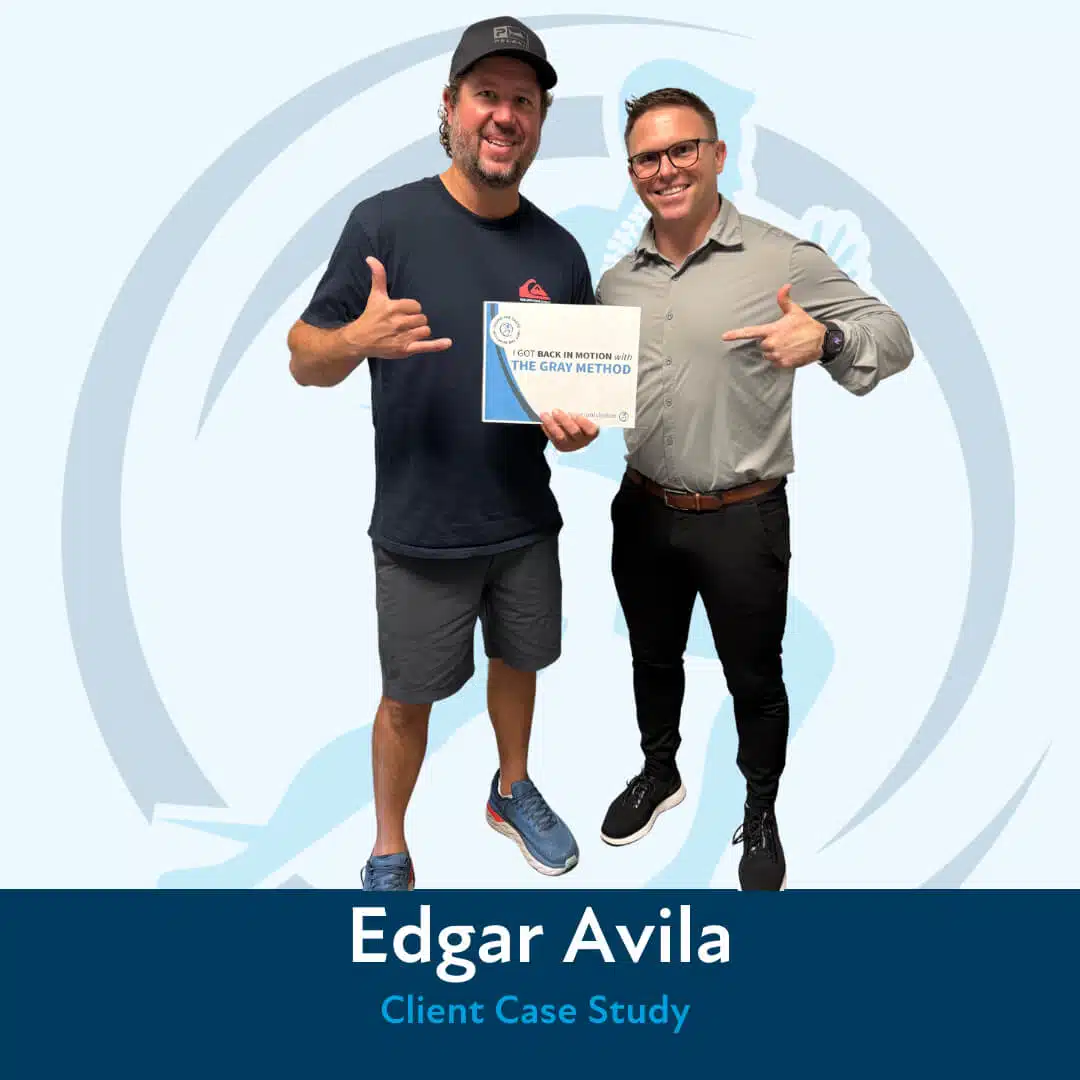
Testimonials

“I’m a little apprehensive about driving from Naples to Fort Myers, just physical therapy several times a week, but I’m glad I did. The outcome has been absolutely spectacular!
“

“I really like that you were more focused on getting me back in the gym because you knew that was really important to me.”


